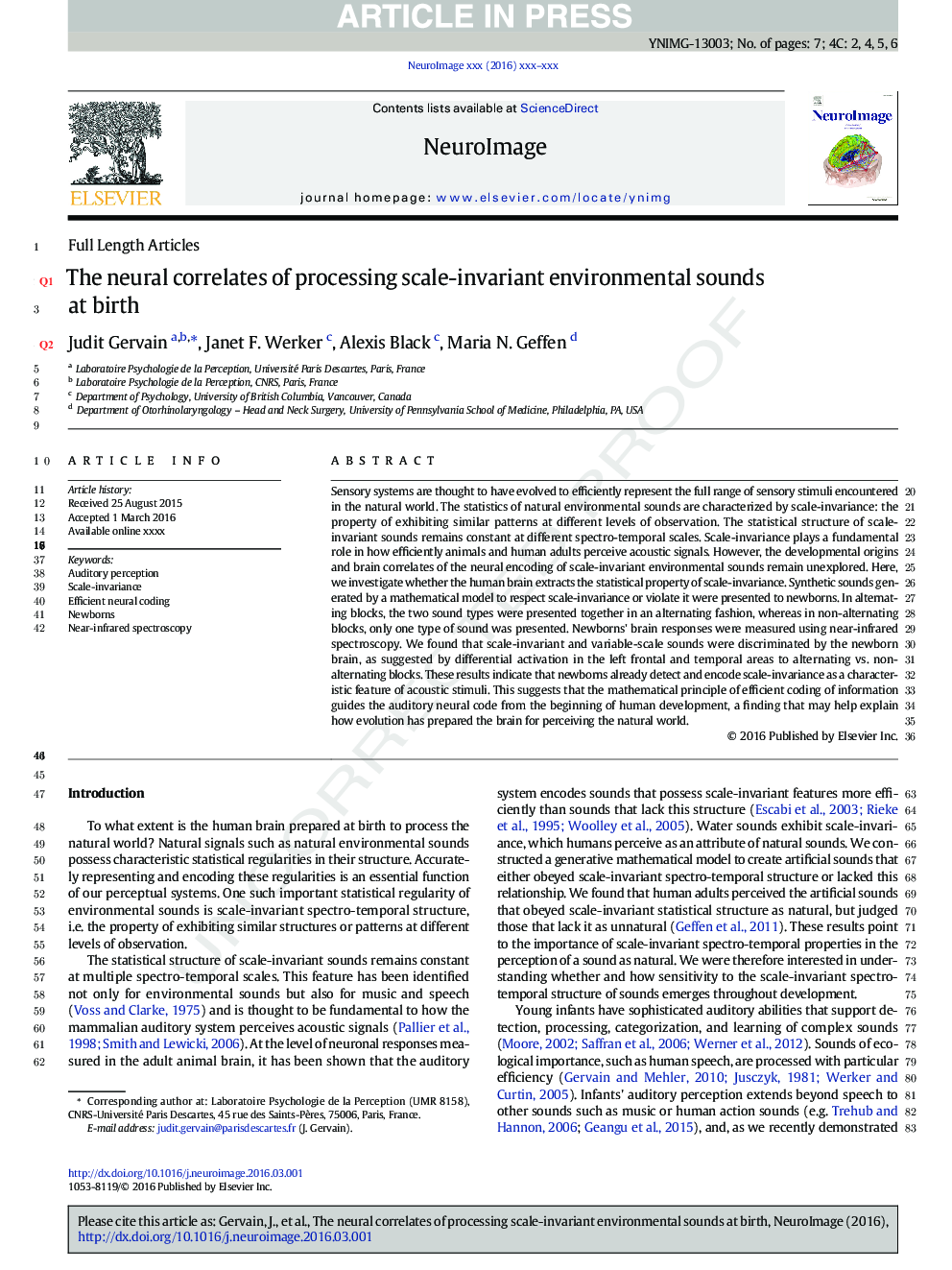| Article ID | Journal | Published Year | Pages | File Type |
|---|---|---|---|---|
| 6023553 | NeuroImage | 2016 | 7 Pages |
Abstract
Sensory systems are thought to have evolved to efficiently represent the full range of sensory stimuli encountered in the natural world. The statistics of natural environmental sounds are characterized by scale-invariance: the property of exhibiting similar patterns at different levels of observation. The statistical structure of scale-invariant sounds remains constant at different spectro-temporal scales. Scale-invariance plays a fundamental role in how efficiently animals and human adults perceive acoustic signals. However, the developmental origins and brain correlates of the neural encoding of scale-invariant environmental sounds remain unexplored. Here, we investigate whether the human brain extracts the statistical property of scale-invariance. Synthetic sounds generated by a mathematical model to respect scale-invariance or violate it were presented to newborns. In alternating blocks, the two sound types were presented together in an alternating fashion, whereas in non-alternating blocks, only one type of sound was presented. Newborns' brain responses were measured using near-infrared spectroscopy. We found that scale-invariant and variable-scale sounds were discriminated by the newborn brain, as suggested by differential activation in the left frontal and temporal areas to alternating vs. non-alternating blocks. These results indicate that newborns already detect and encode scale-invariance as a characteristic feature of acoustic stimuli. This suggests that the mathematical principle of efficient coding of information guides the auditory neural code from the beginning of human development, a finding that may help explain how evolution has prepared the brain for perceiving the natural world.
Related Topics
Life Sciences
Neuroscience
Cognitive Neuroscience
Authors
Judit Gervain, Janet F. Werker, Alexis Black, Maria N. Geffen,
